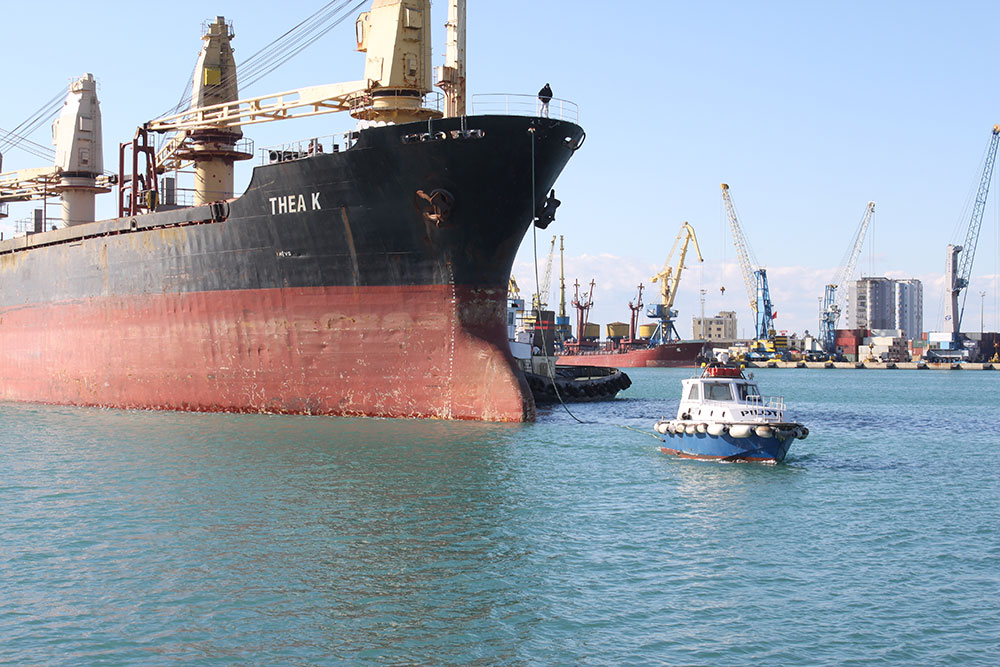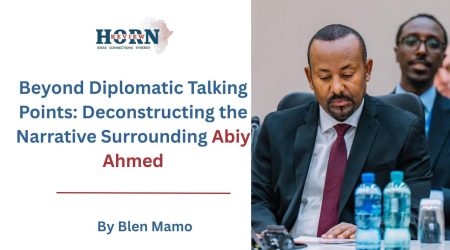
13
Jun
From the Dahlak Islands to the Strait of Hormuz: The Prospects of Ethiopia’s Maritime Agency amid Gulf Turmoil – A Geostrategic Analysis
Scattered across the southern Red Sea off Eritrea’s coast lies the Dahlak Archipelago – a constellation of over a hundred islands whose understated profile belies their emerging geostrategic prominence. Situated along a critical maritime corridor just north of the Bab el-Mandeb Strait, the Dahlak Islands are increasingly poised to play a pivotal role in the evolving balance of power across the Horn of Africa and the broader Middle East.
The Bab el-Mandeb Strait, linking the Red Sea to the Gulf of Aden, is among the world’s most vital maritime chokepoints, essential to global commerce and energy transit. In recent years, escalating tensions within the Persian Gulf and the Strait of Hormuz have prompted a recalibration of maritime routes once deemed secure. The reverberations of instability in the Gulf region now extend far beyond its shores, compelling states and commercial actors alike to reconsider strategic alternatives. Consequently, the Red Sea has transitioned from a secondary trade route to a principal artery – its significance amplified by the diminishing reliability of the Hormuz passage and the broader geopolitical volatility engulfing the Middle East.
This instability stems from multiple, interlinked sources. The protracted conflict in Yemen has spilled into adjacent waters, with frequent missile and drone attacks on commercial vessels heightening security concerns. The geopolitical rivalry between Iran and Gulf Arab states continues to cast a profound shadow over regional maritime domains, especially near the Strait of Hormuz. Concurrently, the shifting dynamics of global power – with reduced U.S. engagement and assertive initiatives by China and Russia – have further complicated the strategic calculus. As Western naval presence contracts and emerging powers assert maritime ambitions, the Bab el-Mandeb Strait and surrounding areas, including the Dahlak Archipelago, have assumed heightened strategic importance in a complex contest for influence and access.
More recently, tensions between Israel and Iran have dramatically escalated. In a significant development, Israel launched targeted strikes on Iranian military and nuclear facilities, reportedly killing Iran’s military chief. Tehran has issued severe warnings of retaliation. This confrontation intensifies the regional security climate and reaffirms the Horn of Africa’s entanglement with broader Middle Eastern conflicts. Such escalating tensions are likely to further reduce the reliability and relevance of the Strait of Hormuz, driving Gulf powers and international trade actors to increasingly rely on the Red Sea as a relatively safer and more stable maritime alternative.
For Ethiopia, these developments signal an urgent need to engage strategically. Any conversation surrounding the Strait of Hormuz – and indeed the evolving Middle East security environment – must be of direct relevance. The growing U.S.-Iran dialogue, coupled with Israeli-Iranian hostilities, forms part of a shifting regional architecture that Ethiopia cannot afford to ignore. Israel, too, has discreetly bolstered its strategic presence – establishing bases and intelligence facilities aimed at protecting its Merkava platforms and overseeing key maritime corridors. Saudi Arabia, meanwhile, has accelerated its Red Sea engagement, driven in part by a desire to shield its westward oil infrastructure. The kingdom’s pipeline transfer strategies and growing presence in the Horn of Africa reflect a bid to control developments along this critical maritime flank. For these actors, the Dahlak Islands emerge as a vital interlocutor between the Bab el-Mandeb and the Suez Canal – a strategic node in both maritime monitoring and projection of power.
Yet, the militarization of the Red Sea is not merely a matter of great power competition. It profoundly impacts the Horn of Africa, notably landlocked Ethiopia, which remains heavily reliant on indirect maritime trade routes. Approximately 95% of Ethiopia’s imports and exports transit through Djibouti’s port, a dependency that presents significant logistical challenges and strategic vulnerabilities. As Ethiopia’s economy expands and its regional stature grows, addressing this maritime dependency has become an imperative of existential significance.
Historically, Ethiopia maintained maritime access, both commercial and naval, through its connection with the Dahlak Islands prior to Eritrea’s secession in 1993. This historical linkage underpins Ethiopia’s enduring maritime interests and highlights the strategic rationale for reestablishing a foothold in the Red Sea littoral. Besides the Port of Assab, reengagement with the Dahlak Archipelago would partially restore Ethiopia’s strategic security footprint and align with international precedents that recognize the importance of littoral access to sovereign economic and security interests.
In recent years, Ethiopia has revived its naval ambitions, which had languished following Eritrea’s secession. Prime Minister Abiy Ahmed has articulated a vision for Ethiopia to establish a modest naval capability – not to build a blue-water fleet, but rather to safeguard maritime trade routes and foster regional partnerships. Within this context, the Dahlak Islands emerge as a compelling strategic opportunity. Their proximity to Ethiopian territory and location astride one of the world’s busiest sea lanes render them an ideal candidate for hosting a limited Ethiopian naval presence. Establishing a logistics base or joint-use facility in collaboration with Eritrea could enable Ethiopia to project security and secure its interests in the Red Sea without rekindling historic territorial disputes or antagonisms. Such cooperation would mark a significant evolution in Ethiopia-Eritrea relations, symbolizing a pragmatic shift toward shared security objectives.
While bilateral cooperation with Eritrea represents the most straightforward and legitimate pathway for an Ethiopian presence on Dahlak, entrenched mistrust and intermittent diplomatic tensions complicate its near-term feasibility. A formal agreement facilitating joint logistics, maintenance, and patrol activities could provide a robust legal and diplomatic framework, potentially serving as a model for enhanced regional maritime collaboration. Nonetheless, Addis Ababa must realistically recognize the formidable political and historical challenges inherent in securing Eritrean acquiescence.
Given these constraints, Ethiopia’s most viable and internationally legitimate course lies in championing a comprehensive, multilateral Red Sea security architecture. By partnering with littoral states – including Djibouti, Sudan, Egypt, Saudi Arabia, and the United Arab Emirates – Addis Ababa can contribute to a collective security framework wherein each participant apportions resources, personnel, and operational capabilities. Within such a construct, Ethiopia’s limited presence on the Dahlak Islands would be embedded within a broader cooperative effort focused on patrol, surveillance, and logistical support. This would mitigate bilateral frictions and harness the shared interests of Gulf and African states in safeguarding this strategically vital corridor. Egypt, in particular, has signaled its priority by expanding its Red Sea fleet – further underscoring the regional momentum for proactive engagement.
Any aspiration toward unilateral or coercive territorial acquisition must be firmly rejected. Ethiopia has no such intention or aspiration. Pursuing forceful occupation would contravene international law, damage Ethiopia’s diplomatic standing, and risk provoking a broader security backlash extending from Asmara to Djibouti. Instead, Ethiopia’s strategy must underscore its commitment to collective regional stability, ensuring that any deployment on Dahlak is transparently tied to shared security responsibilities and fully respectful of Eritrean sovereignty.
The question is no longer whether Ethiopia will engage strategically in the Red Sea – it already does. The key issue is how it will do so and under what terms. The Dahlak Islands present a plausible and constructive option. As the Horn of Africa and the Middle East confront ongoing shifts driven by regional conflicts, Gulf rivalries, and great power realignments, Ethiopia’s timely and decisive action is essential to securing its maritime future.
The window of opportunity will not remain open indefinitely. To assert its role in Red Sea security, protect its vital economic lifelines, and influence the governance of surrounding waters, Ethiopia must regard establishing a forward presence not merely as a strategic option but as an indispensable necessity. The Red Sea is no longer peripheral to Ethiopia’s trajectory – it is central to it.
By Horn Review Editorial
Disclaimers:
This article is intended solely as a forward-looking policy recommendation. It does not reflect any current or ongoing efforts, official intentions, or actions by the Ethiopian government or any other party. The views expressed herein are solely those of the author and do not represent the positions of any institution or government.










